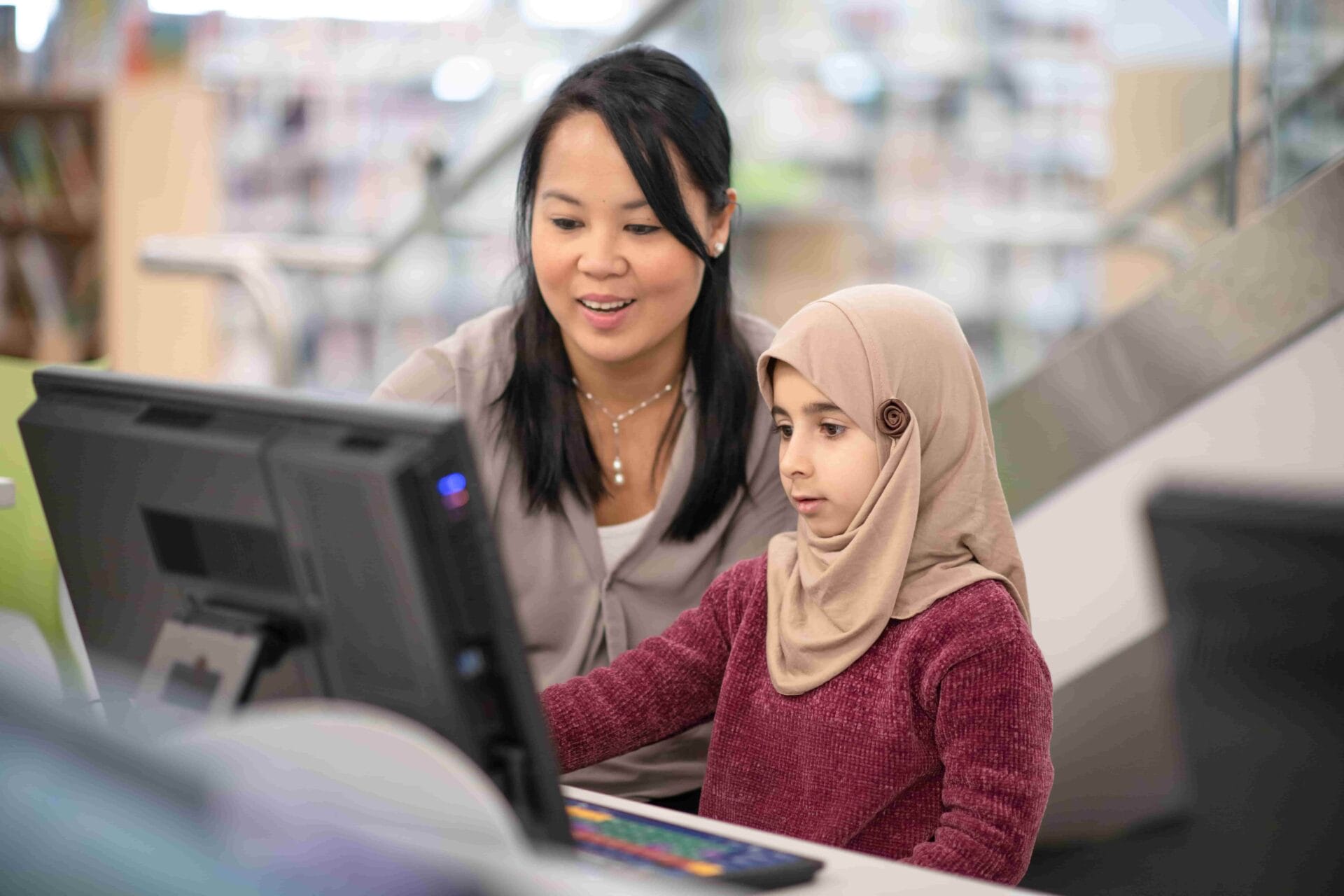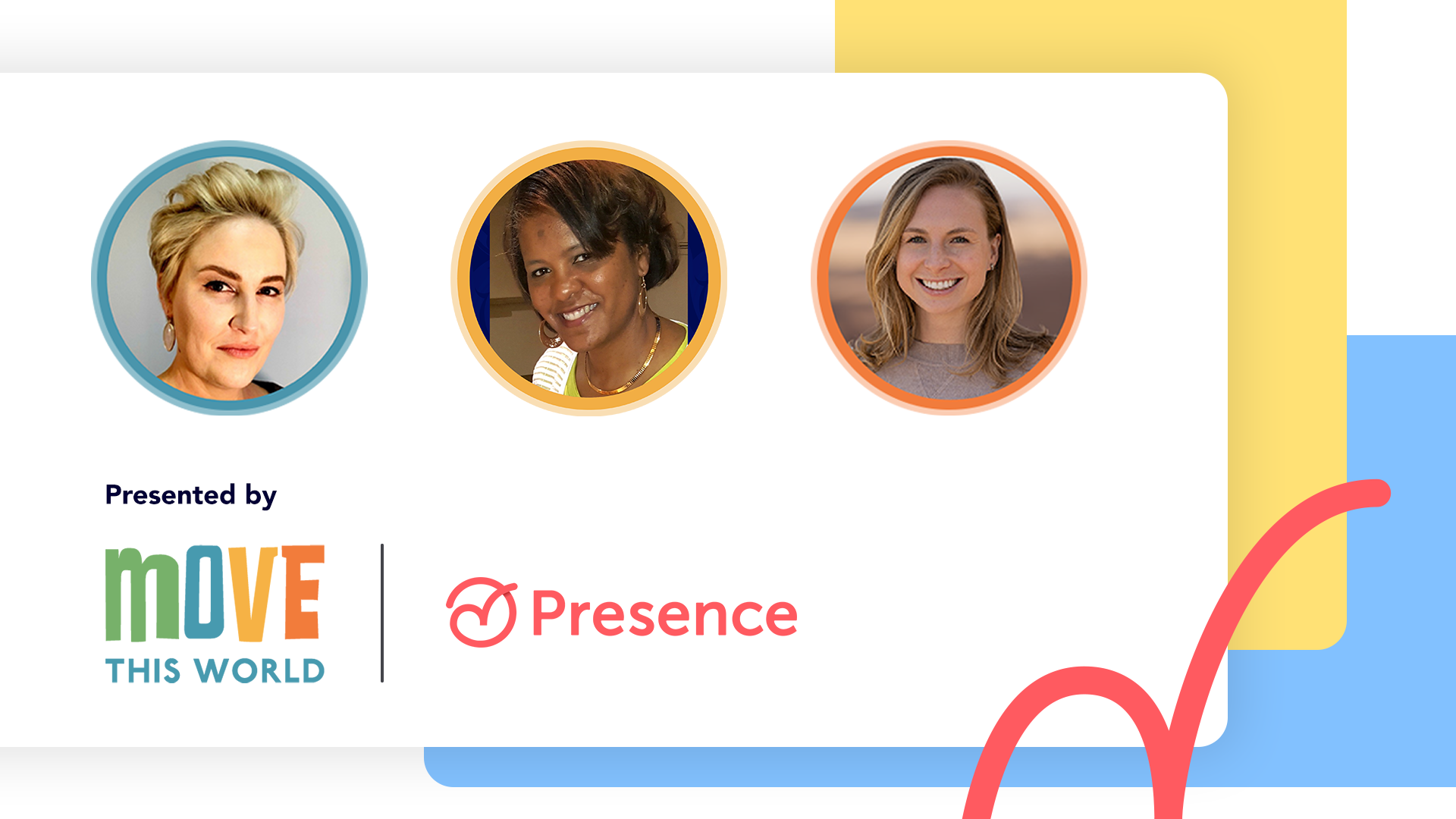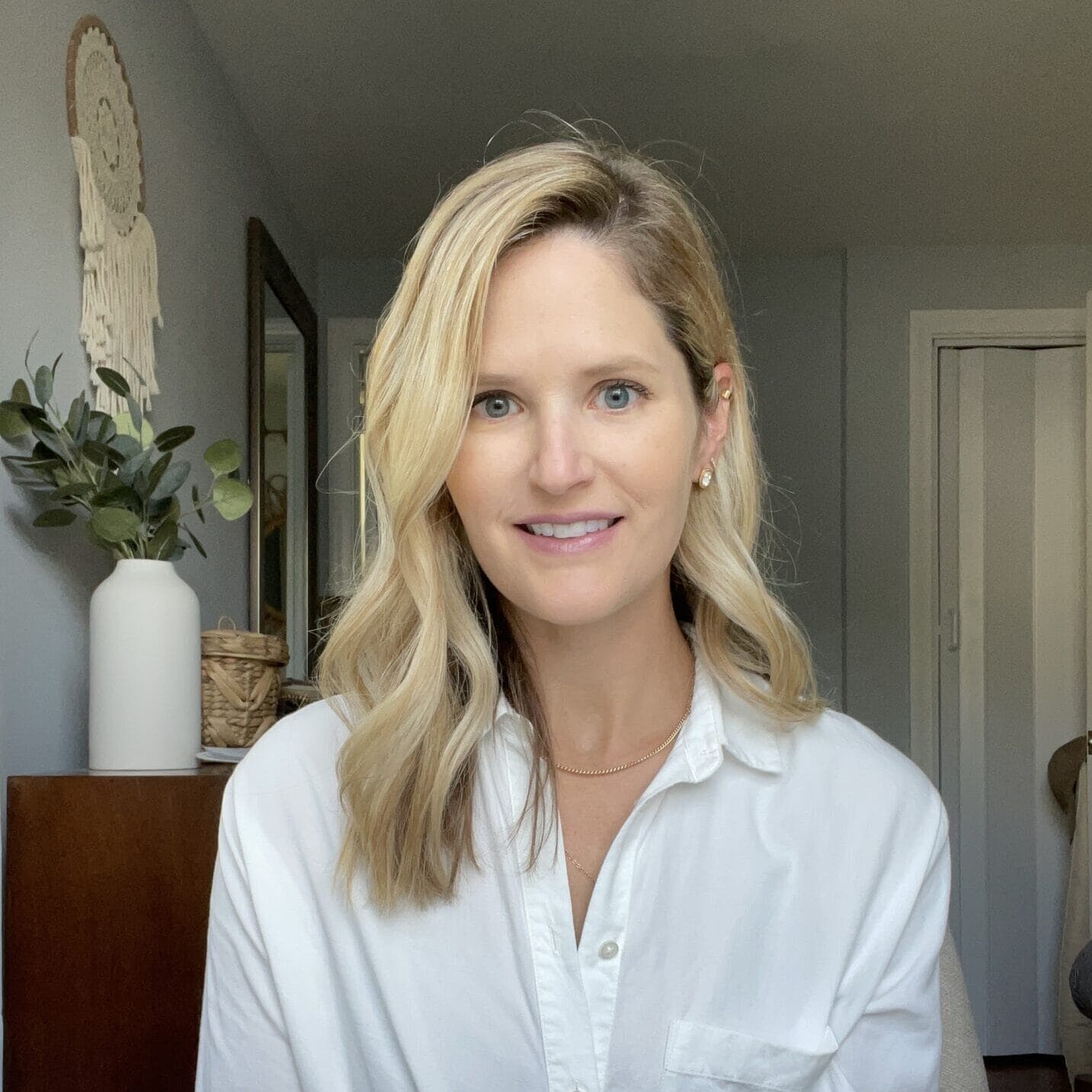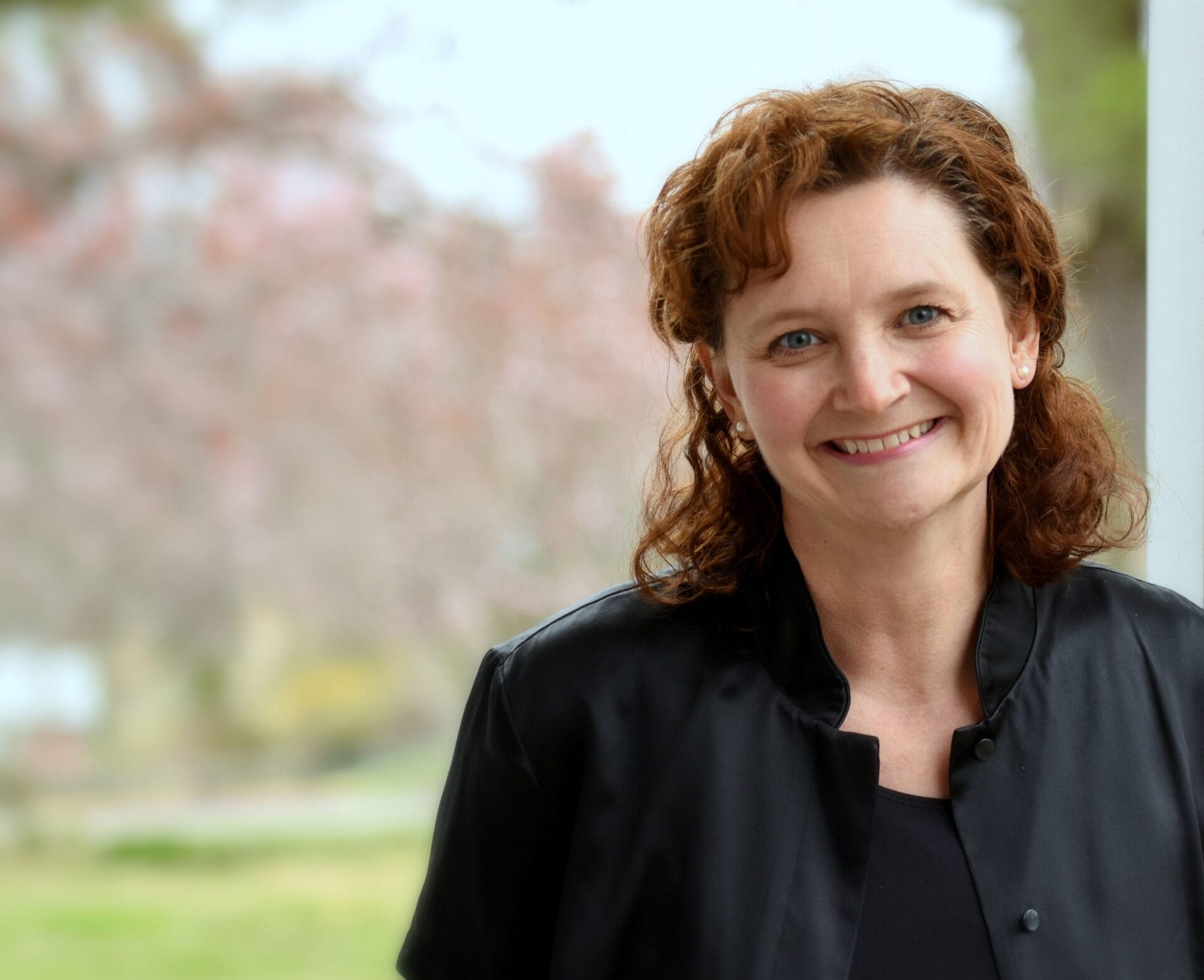
Introduction
Kaitlin H., M.A., CCC-SLP, attended the University of New Hampshire for her undergraduate degree and SUNY Buffalo for her graduate degree.
Let’s start with a little background on your education and family
I went to the University of New Hampshire for my undergraduate degree. I lived in Boston and the New Hampshire area for five years, and then moved back home to Rochester, New York where I grew up. After graduating from the University of New Hampshire, I took a year off and then went to graduate school at SUNY Buffalo. My husband and I lived in Buffalo for 3 years, and in 2008, my husband’s job brought us back to Rochester. We have three children, ages nine, seven, and four-and-a-half. My husband also works from home. We have a busy household right now.
I am also a fitness instructor—I taught Barre, Pilates, and yoga classes pre-pandemic. I’ve started teaching online now too. I hope to go back to that in-person eventually. To relax, I enjoy exercising, meditating, and reading to my kids. Also, we are sailors. We sail in Lake Ontario. I race with my dad and my son, over the summers, in 18-foot sailboats. We also have our other sailboat that we take out as a family. Our family loves being outside in all sorts of weather!.
What inspired you to become an SLP?
I studied Marine Biology for my undergraduate degree. My plan was to become a biology teacher. After I graduated, I started my masters in education, and I had an internship at a science center in New Hampshire. I worked with kids who attended camps at the science center over the summer. I would take them out into the intertidal. We’d collect things from the intertidal and then we’d go back and do fun crafts and activities.
One week, I had a group of kids who were deaf and hearing-impaired. I had no way of communicating with them, but they were able to teach me some sign language. It was the most inspiring moment of my life. I remember thinking, “This is so beautiful and amazing that these kids are so genuine and heartfelt and so badly want to be able to communicate with me.” And they knew I wanted to communicate with them. That’s what spurred me to look into becoming an SLP. After I moved home to Rochester, I looked into grad school programs and that was that.
What made you want to be a teletherapist with PL?
When I had my first child in 2012, I wanted to be able to make my own schedule and have more time with my baby at home. My husband is a research librarian. I was having a miserable year, leaving my son in daycare. I wanted to be home with him more. Over Christmas break, I remember, my husband said, “I wonder if there are any online jobs.” He started researching online and found PresenceLearning. I applied and started in 2013. It was kind of kismet. I thought, “Oh! This is what I’ve been wanting.”
I remember after I had my third baby in 2016 while working at PL, they sent me a little onesie with the PresenceLearning logo. It was so sweet—celebrating two babies (one in 2014 as well) at PresenceLearning. They were so accommodating. My employer when I had my first child was not accommodating at all. They were upset I took so much time off. It was a huge difference here at PL! I felt celebrated as a woman with a child, who also still wanted a career.
What do you enjoy about being a provider with PL?
I love being able to connect with therapists and students all over the US. I’ve been in Arkansas, Washington, Texas, Kansas, Tennessee. Currently, I work mostly in Texas and Vermont. I prefer Vermont because it’s my time zone and it follows my children’s school schedules a little better than the southern schools—which makes it easier on me right now with all my kids at home during the pandemic. Over the years I have worked so many different places thanks to cross-licensing that I’ve done while I’ve been working with PL.
Cross-licensing offers a great opportunity to open up your hours. For example, in Texas, pure evaluation opened up for me which has been super nice. It’s more flexible which has been very beneficial this year not having a ton of childcare, so it’s helpful to be able to do work after school hours. Cross-licensing can also extend the school year if you’re interested in working more weeks. For example, if you’re working in Texas, you’re working August to May. If you’re working in Vermont, you’re working September to June so it can extend you an extra month in the year. Cross-licensing has given me flexibility in my assignments, including the ability to choose populations, or ages.
What were you most surprised about when you made the transition to be a teletherapist?
I was surprised by how easy it was to connect with my students. I was nervous at first because there’s a learning curve. I was young but, I was still nervous about this new modality and wanting to make sure I was still able to meet my students’ needs and connect with them on a more personal level. But I was surprised at how easy it was. I think maybe it had to do with my first assignment. My students were in virtual school so I was treating them in their homes. I got to know their families as well so that was amazing too. I never had that close connection with families as I did when I started with PL. In brick-and-mortar schools you don’t see the parents as often. With the transition to teletherapy, I was seeing parents once or twice a week, and having phone calls. I felt like I was a part of their families. The students were so great and resilient. I tell this to lots of providers who are nervous that the kids might get bored, or to people who are unaware of teletherapy.
People ask, “How do you work with three-year-olds on a computer?” You’d be surprised. Kids love the digital modality. They love watching TV. They love being on their computer. They love their iPads. It’s really motivating to them. Because they love that type of connection, they love having a teacher that’s on the other end of it, participating along with them.
What do you find most challenging about being a teletherapist? And how do you work to overcome these challenges?
There are moments when I wish I could be in person with my students like when I want to give them a big hug or a high five. It can be frustrating as well when audio or video go out during sessions. The PresenceLearning tech support team is absolutely amazing. I have to give them props for sure.
The key I’ve found is to be flexible and go with the flow. I think that’s part of being a teletherapist. You can make a plan for what you want to do with your students and it can all fall through. It can happen in person too.
I do lots of digital things like air high-fives plus the PL platform has lots of wonderful motivating interactives and animations that can help with the reward connection at the end when students are making progress—I use lots of clapping, lots of animations.
How did your practice change during the COVID-19 crisis? Did you transition to working in homes?
I’ve been in brick-and-mortar schools. I think it was harder on the actual school than it was on me because they had to figure out how to make it work for the kids at home. If those kids had been set up, and ready to go, I don’t think we would have missed a beat. It took a few weeks to get computers sent home and to schedule again. At that point, I had to start working with the parents, so it was a little bit of change. But I didn’t feel it as much as the students.
How have you been helping parents and caregivers who are now acting as the primary support person with their child?
I’ve been lucky because in Vermont, they’re actually at school everyday. They’re not home at all. It hasn’t really been an issue. And it’s not like they’ve been closing a lot for COVID-19 cases. I still have collaboration with parents here and there. Here in Rochester, my own kids only have school two and a half days a week. And the other days they’re “remote learning.” It’s very different in Vermont right now.
Could you walk us through your daily routine? A “day in the life of a PL therapist” if you will?:
I wake up and get breakfast and get my kids signed on to their computers. I make sure my youngest has some activities that will keep her busy. My parents come help me one day a week. That’s when I actually see students. Once my kids are set up, I like to start my day by checking emails and looking at my schedule to make a plan for the day. I check in with parents or teachers as needed. Then, I start planning my therapy sessions. The day is always busy and fast when seeing students all day. I try to take a lunch and stretch break when I can. The rest of the day is filled with documentation, writing evaluations and phone calls or meetings.
On the other days, I’m typically going back and forth between my kids on their computers, helping if there are tech issues, getting them materials, feeding them lunch. And I take time with my four-year-old. We do crafts and we bake a lot. We have a puppy too. We like to spend lots of time outside—we go sledding, and we go on lots of hikes.
To wrap up my day, I make sure I’ve answered emails that need to be answered. I document what I did during the day. I make a to-do list to check the next day. I make sure to put reminders on, or calendar appointments. And then I sign out and forget about work for the evening.
How has the PL online platform enabled you to help your students and the schools you serve in new ways?
I love all the tools we have available and the material sharing. I’ve always appreciated the Library as well as the connections we can have on The Lounge. It’s super nice to have connections with all the therapists in The Lounge—you can follow different threads. You can share what you’re doing with a student and ask for any suggestions. This opens up so much opportunity and learning for us as therapists to have so many people to collaborate with whereas if you’re just at a school, you might have maybe one or two other SLPs if you’re lucky, unless you’re at a big district. I’ve really appreciated that.
And then in the user-generated library of materials, people post things they create, for example, for Valentine’s Day, and they’ll tell us to take a look at it. All the tools we have access to like the Spinner, Dice, all the Stamps, Go Fish, Memory Games, Flash Cards, things you don’t think about, and then when you have them you realize these are really useful. I can customize and tailor them to meet multiple goals in one session. It makes it a lot easier. It saves time with planning and executing great therapy sessions.
Can you tell us a little about how you collaborate with teachers and other school staff members?
I love checking in with teachers and parents about my students by phone or email. I send a letter home at the beginning of the year and always introduce myself to teachers and staff I will be working with.
How do you build trust and rapport with parents?
I build rapport by periodically checking in with them, offering suggestions for home, and letting them know they are always welcome to contact me.
What tips do you have for other providers getting started with telepractice?
Be flexible and be patient with yourself. It’s a huge learning curve first of all and will take time to learn not only the PL back end like scheduling and billing, but also how to use the classroom, connecting with the students, figuring out who you need to connect with at the school.
Find your key person. If supporting a brick-and-mortar school, find your key person and latch onto them and ask them for help. If they’re willing to help you, love them because it’s so helpful having a person on the ground.
Also, when I first started, I did a lot of the PL workshops with clinicians which really helped.
Are you interested in joining the PresenceLearning Care Network? Click here to start your application.







